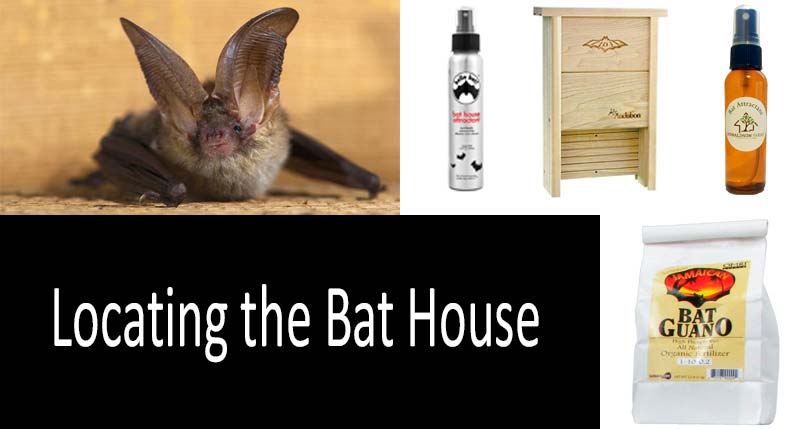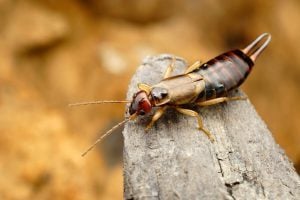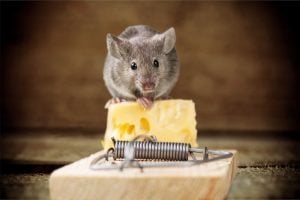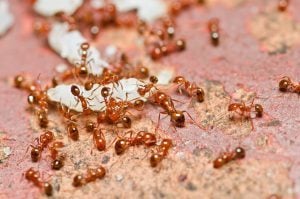Last time we spoke about how to remove the bats from your house and attic. But everything may not be as it seems. In reality, it’s a blessing having bats in your garden: they feed on night-flying insects which are plant pests damaging crops including fruit and vegetable ones. In addition, these flying mammals play an essential role in pollination, in particularly, extracting pollen and nectar from agave and cactus. Now that the bats have been repelled from your house, hundreds of insects have appeared at your place and you are nostalgic about the winged mammals. Do not be sad! It is possible to retain the bats near your house, and a bat box or a bat house will be helpful. It is something similar to a nesting box adapted specifically for bats. You can make it yourself by hand, but some good ready-to-use bat boxes can also be found in stores.
To that end, we have picked the best ready-to-use bat houses for you and studied the ways to lure bats in a new house. What is more important, we have referred to experts and scientists regarding which houses are preferred by bats and where is the right place to locate them.
Table of Contents:
- What a Perfect Bat House Should Be Like?
- Where To Place a Bat House
- Where To Hang A Bat House
- Top-3 Best Bat Houses
- TOP-4 Bat Attractants
What a Perfect Bat House Should Be Like?
Bats are picky about accommodation. In order to lure them in a bat box, it should be perfect in respect of several aspects.
- The size. The bigger it is, the better. Since the bats never settle individually and prefer to live in colonies, as many animals as possible should fit in the house. Provide multiple dwellings for larger colonies.
- The material. Use no plastic or iron, as bats love wood (but not all types). The Wisconsin Department of Natural Resources scientists recommend using cedar, for instance, as it is naturally resistant to changeable weather conditions: “The best wood to use to build your bat house is naturally weather resistant wood like cedar, rough-sawed black locust, white oak or old barn wood”. They also advise forgetting about pine tree and plywood.{code 1316}
- The shape. This is where some variation is acceptable as the house can be wedge-shaped, cylindrical or cubic. Other than the exit hole (the location of which will depend on the shape of the box), there may be very small ventilation holes as the bats do not like drafts. All seams and joints on the outside should be tightly sealed.
- The interior. Bats will not be happy with smooth and slippery walls inside the house as they are difficult to climb on. The rough surface of the wood, a nylon net, small protrusions or indentations, it’s all these flying creatures need to settle comfortably inside.
- The color of the house exterior. You cannot process the interior of the house with anything, but treatment of the exterior is a must. And that’s when the scientists advise focusing on the temperature in your area. If it is under 85˚ F, paint the house in black and dark brown, if it is within the range of 85˚ – 95˚ F, choose dark colors, if it is between 95˚ -100˚F, then use medium or light colors, if the temperature is 100˚ F or higher, paint it white. These colors are not chosen randomly, as a dark house in a cool and shaded area will absorb and store the sun’s heat and light, and a light color will repel sunlight, and it won’t be that hot in this house!
BUT: The Alaska Department of Fish and Game warns us to: ”Use only water based stains/paints, not oil based”, as the latter can be toxic for bats.
Now you know what the dream house of many bats should look like. However, this isn’t enough, as apart from the house itself, its location is crucial in this issue. These are not plain words, as a bat won’t live even in a luxury suite should it not be located properly. Where is the best place to hang a bat house?

Where To Place a Bat House
A house wall is the best place for a bat house since such a location provides a required sun exposure and protects from predators like hawks. “Bat colonies likely preferred bat houses attached to structures because these tended to be buffered from temperature fluctuations,” Rachael F. Long, a UC Cooperative Extension Farm Adviser, W.M. Kiser and S.B. Kiser, former Conservation Specialists at Bat Conservation, said in a research article. Actually, mounting the box directly to any structure, either to a house, or barn and garage, will be favored by bats.
Avoid attaching the box underneath such elements as an eave or roofing which cast a shadow. However, Bat Conservation International specifies that bat houses installed under the eaves provided that they are exposed to sunlight, offer efficient protection from rain and predators. And certainly, a factor of your own comfort needs to be taken into account, therefore, select such a location that the noise and droppings’ odor would not bother the household members.
Look around, though. Is there any stable structure? Some have had a positive experience in selecting a place where to hang a bat house: “I hung it on my fence in the back yard and guess who moved in? Yes 2 bats, I could not believe it,”
Hanging a bat house on tree trunks isn’t a good idea, according to scientists at the University of Nebraska–Lincoln Extension, scientists at the University of Nebraska–Lincoln Extension, Institute of Agriculture and Natural Resources. The reason is that the tree’s foliage is likely to block out the sun and along with that the branches might be home to predators. Nevertheless, the scientists admit an option of placing a box on a tree, given it receives enough sunlight and has an easy access to a permanent source of water.
{code 1317}
Well, then let’s consider where to place bat house if the choice fell on trees? To start with, ideally, the tree should be situated in the middle of a pond or lake. Agricultural fields and woods, in particular, upland forest on south or southwest slopes and forest cuts, provide a variety of feeding opportunities and are properly exposed to the sun. That is why these are highly recommended options.
Selecting a tree, opt for those with branches located higher than where you are going to fix a box, and take care to find a lone tree so that branches wouldn’t obstruct the flight of birds. Also, consider trees located at field edges since they can also be attractive to bats. Low branches of dead trees could be an option as well since there is no foliage that could shade the installed house. In addition, place a shield in the form of sheet metal around its trunk. Remember that the construction should be high enough to prevent predators from jumping it over. There is an evident advantage in bat houses being mounted on trees as it is the easiest place for bats to find the house because they normally live in tree cavities.
Kathleen Kerwin, a Program Associate, and Brooke Maslo, an Extension Specialist at New Jersey Agricultural Experiment Station, claim that mounting a bat house on a pole could also be an effective way to attract bats. However, this method is poorer in terms of work effort and involves the participation of other people to cope with the task. “We recommend using two 2-inch diameter, 10-foot galvanized metal pipes joined by a 2-inch galvanized metal coupling to create a 20-foot long mount. At least 20% of the entire pole, about 4 feet, should be cemented into the ground resulting in a bat house about 16 feet high. The bat house can be attached to the pole using two 2-inch U-bolts,” the scientists instruct those willing to hang a box on a pole. A potential drawback is that pole-mounted houses might be used by owls and hawks to sit on which poses a threat to bats.

A number of factors affect the attraction of bat houses. First of all, a box should be at least 10-15 feet above the ground and 3 feet away from various obstacles: it is necessary for comfortable entrance and exit of the animals. Just as important, it should be located no more than a quarter mile from any water source, what will particularly encourage bat colonies. Also, a box shouldn’t be installed on top of a hill due to stronger winds there, nor should it be placed above tall shrubs.
The most prudent homeowners use the built-in bat boxes. In this case the houses are built into the wall or the facade of the house during construction. These designs are the most reliable ones and keep an optimal temperature best. Take care to mount a number of bat houses, not a single one since bat colonies sometimes change a roosting site so it would be a smart thing to provide for an alternative.
The temperature of the environment is one of the key factors to be considered when choosing a bat box. Holly K. Ober, associate professor at North Florida Research and Education Center, points out that the temperature inside the construction shouldn’t be excessively hot or cold, otherwise it will displease these mammals and they won’t roost there. Place the house on the sunny side, as during the breeding season and when the baby bats grow, the walls of the box should be sunlit for at least 7-8 hours daily. It is best to face them south-eastward or south-westward. Moreover, the place shouldn’t be too windy, that’s why it is inadvisable to hang the bat box over a broken window, a place of intense human activity and near AC.
{code 1318}
Bats are also sensitive to loud sounds, noise and bright lights, so think beforehand whether such factors will be there. It is a bad idea to hang the bat house near a busy road, for example, as bright light flash there often and the noise level is quite high.
Other animals can also disturb calm bat life. Hang the house so that your pets, as well as wild predators and insects such as wasps or bees, will not be able to get it. Bats like peace and quietness: if there is a beehive nearby, they won’t settle in their new place of dwelling.
Don’t expect your bat house to be occupied right after its installation. It would take half a year or more for bats to appreciate and move into a new roosting site. Having settled in the box, the bats are most likely to return there next year and free you from the need to bother about pest control measures. All you have to do is to properly determine where to place bat boxes.
Where To Hang A Bat House
| Place/Grade (1 – 10) | Advantage | Disadvantage |
| On a house wall
Grade: 10 |
Exposed to the sun; protects from predators; buffered from temperature fluctuations. | Might cause discomfort to the household. |
| Underneath an eave
Grade: 8 |
Efficient protection from rain and predators; buffered from temperature fluctuations. | Might create shade; might cause discomfort to the household. |
| Atop a barn
Grade: 9 |
Exposed to the sun; buffered from temperature fluctuations. | Provides poorer protection from predators. |
| Atop a garage
Grade: 9 |
exposed to the sun; buffered from temperature fluctuations. | Provides poorer protection from predators. |
| On a fence
Grade: 7 |
Exposed to the sun; buffered from temperature fluctuations. | Might be not stable enough; provides poorer protection from predators. |
| On tree trunks
Grade: 7 |
Easier discovered by bats; properly selected tree lets in enough sunlight. | Foliage can block out the sun; branches can harbor bat predators. |
| On low branches of a dead tree
Grade: 10 |
Easier discovered by bats; plenty of insects gather there; no foliage to shade the box, enough sunlight. | Branches can harbor bat predators. |
| On a pole
Grade: 10 |
Well exposed to the sun; you can chose exact location where to install a pole. | Labor-intensive; requires the participation of other people; vulnerable to predators. |
Top-3 Best Bat Houses
Buying a bat shelter or a bat house might as well be the most pleasant pest control activity. You buy a $30 house, comfortable for your new night-flying neighbors which would in their turn save you from annoying insects. The bat boxes are moderately priced from $30 and they can fit at least 20 bats inside. The most expensive models cost ~$100, but they are most spacious and can fit up to 600 bats. You will hardly need such a huge hostel, that’s why we’ve picked the most advantageous bat houses containing up to 100 bats.
Audubon Bat Shelter Model NABAT
This is a #1 Best Seller in the Bat Supplies category. People who don’t want to surround themselves with an overly large colony of bats like it, despite the fact that Audubon is rather small: its dimensions are merely 12 x 4.2 x 16 inches. Such a house can fit a small family of bats who would live the more, the merrier. The price of Check current price is also favorable as it is cheaper than all of its competitors mentioned in our review.

{code 723}
Price: Check current price
Looker Products Triple Chamber Bat House, Approved by the Organization for Bat Conservation
This is another popular bat box with the excellent ratings. Its price is twice as high as that of our review’s leader but it is manufactured in the USA and is made from cedar and plywood. It is ready for installation. A landing pad is made of nylon net on which the small bats’ feet can grip. The manufacturers boast of “proper ventilation” which would be the key to the comfortable living of the homeowners. The dimensions of the bat box (which is one of the most essential parameters) are satisfactory; they are 14 x 5 x 24 inches.
 What is important, the bat house is supplied fully assembled. All you have to do is to protect the Looker Bat House from moisture and paint it darker or lighter depending on your region (for heat absorption or reflection). Some adjust the bat box for fixing it on a tree: you might need additional hooks for that.
What is important, the bat house is supplied fully assembled. All you have to do is to protect the Looker Bat House from moisture and paint it darker or lighter depending on your region (for heat absorption or reflection). Some adjust the bat box for fixing it on a tree: you might need additional hooks for that.
The customers praise the quality assembly of the product and ask other consumers to be patient. Some of the owners only had the bats settled in the box after 40 days, others had them settled after two months. However, there have been those who only managed to lure bats inside after 3 years. The most important thing is that these attempts resulted into 88% of positive feedback. By the way, many users in the comments note a substantial decrease in the insect population in the bat-controlled areas.
Price: Check current price
Heath Outdoor Products Deluxe Bat House
This option has a significant advantage. It is protected from the impact of weather and pests. It is made of quality cedar and it looks decent enough for its price of Check current price. The dimensions of Heath Outdoor Products Deluxe Bat House (14.8 x 4 x 23 inches) are comparable with its Looker rival, but unfortunately there is no nylon net for the bats to grip on to inside the house. This bat house can fit up to 20 moderately-sized bats, which isn’t much but is quite enough if we’re not dealing with mass infestation.
The effectiveness of Heath Outdoor Products Deluxe Bat House was appreciated by 75% of customers, and it is therefore rated at 4.1 stars out of 5. The users state in the comments section that in reality the box would only fit 8-10 bats. Some of them complain of the mediocre assembly and sealing (insulation and nevertheless important): “This bat house was poorly constructed. I will have to do some work on it in order to get it as water- and weather-proof as it needs to be. There are huge gaps between the roof and body of the house and nothing for bats to grip on inside the house”, – comments Randy.
In spite of this, the bats still fly inside and can live in this house for several years. That’s why this option is suitable for those who are not chasing perfection and are looking for an optimal sized bat box at an affordable price.
{code 725}
Price: Check current price
Bat Houses Comparison Chart
| Bat box | Dimensions (inches) |
| Audubon Bat Shelter Model NABAT- #1BestSeller | 12 x 4.2 x 16 |
| Looker Products Triple Chamber Bat House | 14 x 5 x 24 |
| Heath Outdoor Products Deluxe Bat House | 14.8 x 4 x 23 |
How to Attract Bats in a Bat Box with Guano, Water, night-scented plants and other lures
Note that you’ll be able to find feedback by the customers who have been luring bats for years for all three products. Some of them used attractants; others even bought bats to settle them in the house. According to Penn State extension the simplest thing is to attract bats is food source(stop using insecticides) and a water source and a safe place to live, especially during the breeding season, i.e. in the summer.
If you have firmly decided to install a bat house and invite the tenants there in the summer, here are a few tips on how to attract bats to your site.
1. They are thirsty. A source of water: a pond, irrigation, or a mini-pool should be nearby.
2. Use fragrant and night-scented plants. They are favored by pests which in turn are food for bats. Some plants to consider are Evening Primrose, Four O’clocks, Nicotiana, French Marigolds, Heliotrope, Asters, Buddleia, Rosemary, Lavender and Honeysuckle. It is also recommended to have mature trees which harbor plenty of insects. Bats prefer dull white, green and purple flowers which should be regular or bowl-shaped.
3. Attract bats with guano. They will settle in the house faster, if they feel the smell of their own feces. Collect guano in the attic and spread it over the bat box. This will simplify the process of migration from an attic or under the roof, for instance.
BUT: be careful when using bat guano as bait, as it can be harmful for your health. We’ll speak below about the diseases which you can catch from coming in contact with it so that you know that bats are not only useful as they feed on mosquitoes in your backyard, but that they can also be dangerous.
4. Plant a line of shrubs or trees because such hedgerows are meant, among other things, to acts as windbreaks. This is usually recommended for crop protection and will please bats which avoid windy areas.
5. Use an acoustic lure. Sussex Bat Research Group has conducted a field experiment proving that a synthesized bat call really works when it comes to attracting these mammals. The sounds were recorded near a roosting site of a maternity colony in British woodlands of West Sussex.
6. Exclude artificial lighting from the landscape. While natural sunlight attracts bats, an artificial lighting, on the contrary, repels these nocturnal animals. If the building wall where a bat box is hung must be necessarily lit, the UK’s Bat Conservation Trust recommends that a homeowner should make sure that the roosting site and flight path are not illuminated.
7. Don’t let cats, if any, out in the garden at night. Among other natural predators, cats pose the greatest risk to bats since these resourceful pets tend to track down the roost location and attack their prey.
TOP-4 Bat Attractants
Obviously, it is not enough just to install a house for bats, what you have to do is help them find their way to a new home. And that is where bat attractants might help. The marketed products generally exploit bats’ sensitivity to odors associated with roosting places. Below we will take a look at lures based on guano, organic roost odorants and ammonia.
Bat House Bat Attractant for Bat Houses – Uncle Dunkels Bat Nip’
This bat attractant is much more eco-friendly than guano or any product based on ammonia which is toxic. An active ingredient is 2-aminoacetophenone (2-AA), an organic compound, combined with other roost odorants. It’s advantage is that guano and ammonia are excluded from the formula as the former may transmit diseases and the latter can pose a risk to human and bat health at certain levels of concentration.
The manufacturer promises better performance of this product compared to competitive lures and highlights the fact that Uncle Dunkels Bat Nip’ has been tested in the field. A research carried out by the manufacturer resulted in the invention of a unique formula which includes concentrated odors of bat roosts and embraces a variety of species of this flying mammal.
This is a ready-to-use spray intended to be applied on the surface of a bat house. But it’s not like the product was really popular on as it was rated just at 3.6 out of 5 stars. One of the users laments that the product doesn’t work: “I’m still not sure about this. We’ve been spraying our new bat house regularly for a little over a month, but still no bats”. The manufacturer in its turn reminds to its frustrated client of the fact that generally it takes up to 12 months to attract bats into a newly installed roosting site. So don’t expect immediate result, all you need is patience provided you follow the instructions.
{code 726}
Price: Check current price
BAT CALL Bat Attractant 4 oz Paste
Nevertheless, let’s have a look at a guano-based product marketed specifically as a bat attractant. This paste is made from a hand-collected guano in North America. The substance needs to be re-applied, according to the manufacturer’s instruction, one teaspoon of the paste should be applied every three months on the landing pad and inside the box. The Bat Call is recommended to be applied in the spring or summer when these mammals are most active and are likely to be lured in.
This product is natural as the previous one, however, it isn’t clear what other ingredients, besides droppings, it contains. The manufacturer says that there are “other secret ingredients to produce a natural scent” without specifying which exactly. Moreover, a scent of guano helps bats to discover a box smelling like that, rather than stimulate them to occupy it. The latter depends largely on other factors such as the box construction and location.
Buyers haven’t left any feedback in the comment section so far, so it’s difficult to evaluate the customers’ experience.
{code 728}
Price: Check current price
Bat House Attractant-Attract Bats to your Bat House
A spray based on ammonia is intended to attract bats into houses made of pine and other non-scented materials. This rules out boxes constructed with the use of cedar which is highly recommended by scientists. Another drawback is that ammonia may be toxic both to humans and bats, therefore you should be careful and follow an instruction provided by the manufacturer, in particularly, not to contact with the substance and wash hands after the use.
This bat attractant is easily applied: spray five times to the lower entrance of the box on a monthly basis. As we noted above, you should keep in mind that it will take some time before bats occupy a new roosting site.
{code 729}
Price: Check current price
Down to Earth Organic Bat Guano Fertilizer Mix 7-3-1, 2 lb
This product has been highly appreciated by customers, 84% of them awarded it a maximum of 5 stars. It is foremost promoted as an excellent organic fertilizer for gardens, but as we noted above, placing guano inside the bat house will definitely enhance the probability of bats being lured into that box. This is due to the fact that these flying creatures prefer areas where other bats are roosting and the presence of the droppings would give such an impression.
Among the ingredients, there are bat guano, available phosphate 10%, high phosphorus. To put it another way, the substance doesn’t fully consist of droppings of these flying animals, and there are no users’ comments related to that way of the product’s use. Therefore, it would be preferable to collect guano produced by bats in the wild, however, there is a risk of being infected. Holly K. Ober at Florida University notes that some people believe that painting a box with guano will help to attract bats into a new house which is, in his view, is a misconception. The scientist claim that no research has proven the efficacy of this method so far.
Price: FIND THE BEST PRICE
Bat Attractant Comparison Chart
| Bat Attractant | Active ingredient |
| Bat House Bat Attractant for Bat Houses – Uncle Dunkels Bat Nip’ | 2-aminoacetophenone (2-AA) |
| BAT CALL Bat Attractant 4 oz Paste | Bat guano |
| Bat House Attractant-Attract Bats to your Bat House | Ammonia |
| Down to Earth Organic Bat Guano Fertilizer Mix 7-3-1, 2 lb | Bat guano, available phosphate 10%, high phosphorus |
{code 168}
Why Should You Know How Bats Hibernate?
Where and how do the bats spend the winter? Are they in hibernation? These are not idle questions in our business. This matter is especially important to the residents of the northern states, where the winter temperature drops down low.
Let’s start from the beginning. There are migratory and sedentary bats. If you have the migrating ones, it’s okay as in the fall they will fly away to warmer regions. But if you have sedentary ones, this could turn into a big problem for you.
Where Do Bats Live in the Winter?
Out in the wild the bats hibernate in caves and grottoes, where the temperature does not fall below zero, and where it is highly humid (so he would not need to drink) and quiet. If you live in the northern states, and in the winter the temperature falls below 32 degrees F, then be prepared for your sedentary bats to look for a quiet place to spend the winter. You are lucky if there is a cave or grotto, where they will be able to arrive for the winter, otherwise there is a risk that they settle in your attic, shed or basement. So maybe you should not “lure” them and hang bat boxes at your place, and perhaps it is better to repel them (if you decide to repel them away, read our research of the Best bat repellents).
How Do Bats Hibernate?

After they have found a place for hibernation, the bats prepare for it. To do this, they use tabs or niches, and rough wood: they grip on them and climb inside, hang upside down, and remain in this position throughout the winter. Some types of bats prefer to hibernate in groups, clinging onto each other, while others hang separately.
Bats don’t hibernate immediately, but gradually, perhaps, at that time you’ll first hear their loud cries at your place. But then there will be silence as all the processes of life slow down and animals become numb. Interestingly, during the active summer period the bat body temperature can reach up to 118º F, and during hibernation it drops to 35 º F without any harm to the health of a baby-bat! The heartbeat also slows down: a furious pace of 400-600 beats slows down to the sluggish 3-4 in winter. If you could take a bat in your hands at this moment, you would think it is dead. That’s why it is not advisable to wake bats in the winter. The violent awakening and forcing them into searching for other place is a huge waste of energy for these mammals and their tiny little bodies are alive only thanks to the stored in the summer energy of fat.
Why is Bat Guano So Dangerous?
The most obvious sign of a sleeping bat army is the pungent smell of ammonia, which is released by their guano. It often accompanies the hibernation of those bats, which hibernate in large colonies, for example, of the Mexican (Brazilian) free-tailed bats. They manage to survive with such a concentration of the toxin in the air which would kill a man! But this does not go without consequences as the ammonia turns the dark gray or brown bat fur almost white. It carries more serious hazard as well.
Small bats are often even clumsier and cannot always firmly hang upside down. Nobody envies a pup which would accidentally fall down while hibernating. The dermestid beetle larvae also live in the guano. So be very careful with the bat guano.
The bat guano causes histoplasmosis (capsulatum camsulatum histoplasma fungus), which in turn leads to human pulmonary diseases. You should therefore avoid inhaling dangerous guano fumes and stepping on the dried feces. Also, make sure you always wear a dust mask.
In the caves, where no man has gone before, huge deposits of toxic bat excrement will not cause harm to anyone. But if found in an attic, they present a real danger to a human health, about which you need to be aware well in advance.
{code 416}










